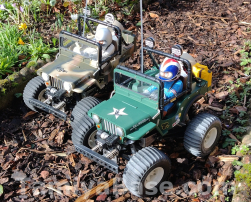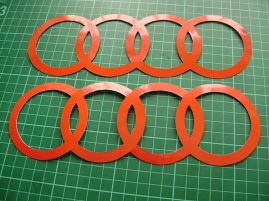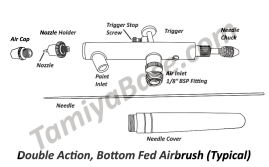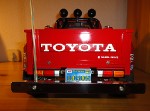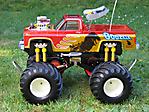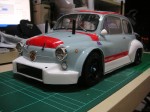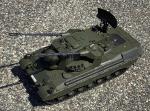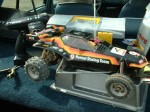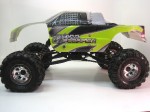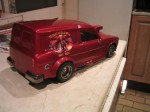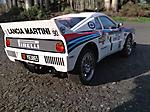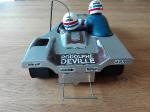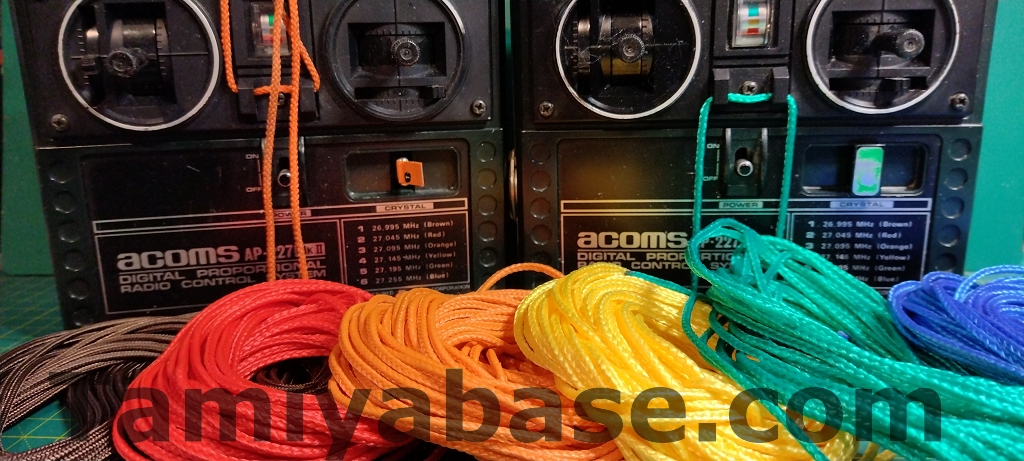Introduction
Lots of early transmitters (like the Acoms “mk.i” and mk.ii) used to come with frequency colour pendants that clipped on to the end of the metal antenna (I believe they were a legal requirement in some places) – and what were somewhat optimistically called “lanyards”. These were simply lengths of polypropylene cord in a colour to match the frequency colour band that you tied on to a loop (or loops) on your transmitter & went around your neck and stopped your transmitter hitting the ground if you needed both hands in a hurry.
Pennants were still included in the Acoms mk.iii set (though mine went back in the box due to peer pressure of having a “girly ribbon” on my transmitter :D ), but the lanyard – and even a loop on the TX was omitted.
The TX loop came back for the Technidrive (“mk.iv”) and chrome mk.V, but the “lanyard” never did. The mk.iv was the last Acoms TX to include a frequency pennant.
It’s uncommon to find an original pennant or lanyard on an old transmitter of any make, unless it was left in the box and a conscientious owner kept everything – but it’s quite a simple fix to make your own lanyard.
Before we move on, there’s really nothing to stop you passing off a brand new one as a genuine vintage one, so I must ask you to promise not to abuse this awesome new superpower I’ve just given you ;).
Method
Step 1: Buy
Look for 2mm (or even 1.5mm, depending on how loose your supplier is with their measuring) polypropylene cord on eBay or the like in the colour(s) you want. In order to get skeins of brown, red, orange, yellow, green and blue at fair prices I had to go to three different suppliers.
For me, it also involved making graphs to determine the “best” balance between the mutually exclusive goals of getting enough cord to make at least as many lanyards as I’d ever want to & still have some spare, but not enough that storage is a problem, not spending too much, but still taking advantage of advantage of a lower cost per meter with longer lengths. And yes, I did have to do it, it’s as much a curse as a blessing. There’s an obvious “right” answer of 30 metres, but I went for 10m on grounds of overall cost and storage.
If your supplier has used any tape to tame the cord for the packing process, remove it when it arrives as it’ll only go sticky.
Step 2: Cut
Cut 1.44m (3’, 9 & 3/4") of cord off & melt the ends, if you can make them slightly pointed before they cool, so much the better as it’s often a pig to winkle the ends through the transmitter loop(s).
Step 3: Tie
Tie the cord to the TX. I can only remember two knots – my shoelaces, and the “forbidden” reef (or square) knot. The thing is, even if I could remember a bowline knot, I’m not mooring a boat or tying someone’s lifeline – and in this case, we actually want something that is easy to undo for adjustments, we’re creating a loop here, and the load is on the two standing ends.
Step 4: Regret
If it was difficult to get a working end of your cord through the (sometimes very basic) mount on your transmitter, you’ll already have realised how difficult it’s going to be to change the lanyard if you swap your frequency crystals and want one to match.
If not, attempt to stow the lanyard so it’s not in the way or dragging along. I can almost guarantee it’ll look untidy, and get in the way of the battery hatch, on/off switch, power indicator or extending the antenna.
Conclusion
You can see why these never really caught on. It might be nice to have the correct colour bit of string in an old but NIB radio set, it might even add something for shelf queens, but I think these are really best left to proper, clip-on lanyards on expensive, complicated radios in more challenging control scenarios, such as flying a large scale, multi-jet plane, where a slip or drop could have a heavy, fast-moving object hurtling somewhere you’d really rather it didn’t. There, you can display your allegiance to your brand of transmitter (with zero reference to frequency) in the knowledge it might be doing some good.
Vintage, mass market 2-channel car radio lanyards on the other hand, they’re just annoying bits of string. Plus, what the heck are you supposed to do for split frequencies? Start with white & dye your own stripes?
__________________________
Written by TB member Jonny Retro
